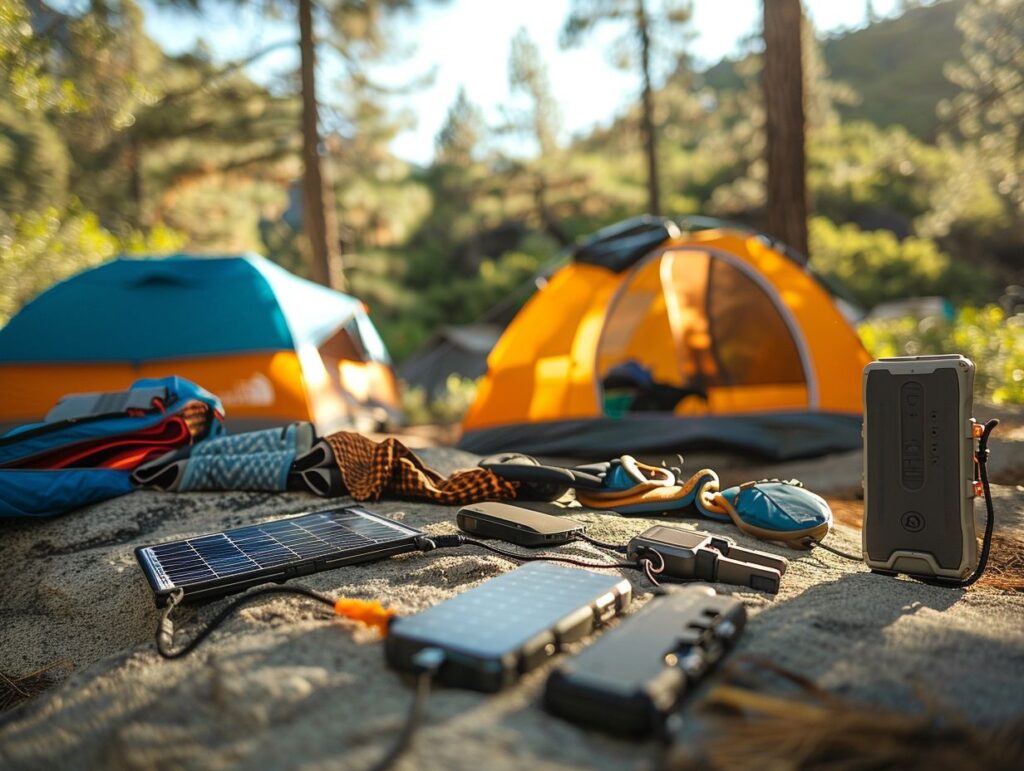Are you planning a camping trip and looking for a reliable way to keep your devices charged? Look no further!
In this article, we will be discussing the top 5 solar chargers for camping, including the Anker PowerPort Solar Lite, Nekteck 21W Solar Charger, RAVPower Solar Charger, BigBlue 28W Solar Charger, and Goal Zero Nomad 7 Plus Solar Panel.
We will also provide you with tips on how to effectively use a solar charger while camping, such as positioning the solar panel, connecting devices, and maintaining the charger.
Stay tuned for additional tips on maximising the efficiency of your solar charger while enjoying the great outdoors.
Key Takeaways:
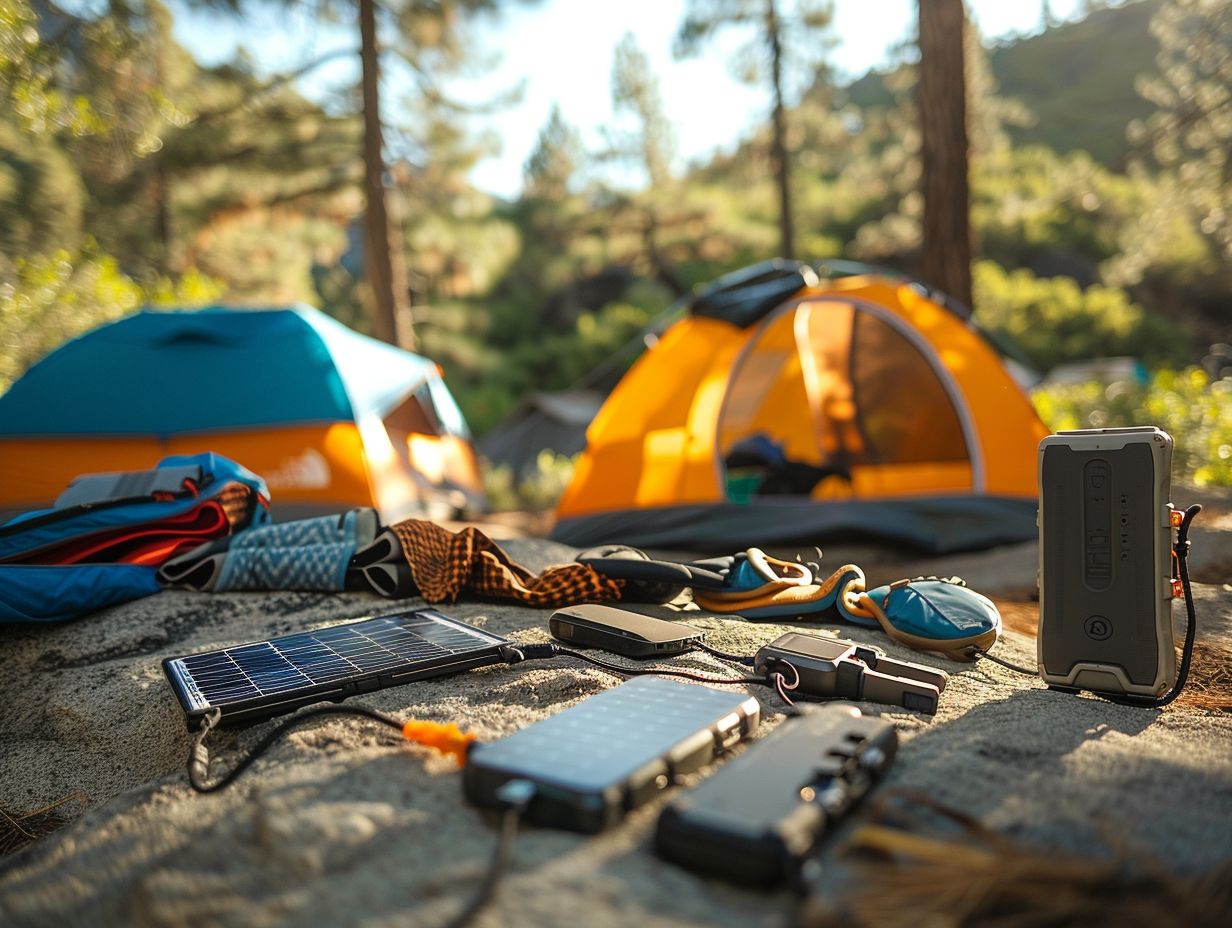
- Take advantage of the sun’s energy with a reliable solar charger such as Anker PowerPort Solar Lite, Nekteck 21W, RAVPower, BigBlue 28W, or Goal Zero Nomad 7 Plus for your next camping trip.
- To make the most out of your solar charger, properly position the panel, connect devices, and monitor and maintain the charger.
- Additional tips to maximise your solar charger’s effectiveness include using a power bank, charging during daytime, protecting from extreme temperatures, and keeping the solar panel clean.
Top 5 Solar Chargers for Camping
When strategising for a camping expedition, it is imperative to ensure access to a dependable power source for electronic devices. Solar chargers present themselves as an environmentally sustainable and easily transportable solution, harnessing energy from sunlight to maintain the charge of your devices and keep them fully operational.
1. Anker PowerPort Solar Lite
The Anker PowerPort Solar Lite presents itself as a compelling option for campers seeking a lightweight and portable solar charger that can effectively charge devices through USB ports. Its compact design enhances its portability during outdoor endeavours, offering a convenient power supply for smartphones, tablets, and cameras.
The integrated solar panels of the charger efficiently capture solar energy to facilitate swift charging of your devices, thus positioning it as a sustainable and environmentally friendly choice.
By exhibiting a notable proficiency in converting solar power into usable energy, the Anker PowerPort Solar Lite guarantees the possibility of maintaining connectivity even in remote settings where conventional power sources may be scarce.
2. Nekteck 21W Solar Charger
The Nekteck 21W Solar Charger is recommended for individuals who enjoy outdoor activities and require a durable and effective method for charging their electronic devices. This charger is equipped with dual USB ports to facilitate simultaneous charging.
Its compact and portable design renders it particularly suitable for camping excursions, enabling users to efficiently harness solar energy to maintain the power levels of their devices.
The high conversion efficiency of the Nekteck 21W Solar Charger allows for rapid charging of smartphones, tablets, and other electronic devices, even in suboptimal sunlight conditions. As a dependable companion for off-grid journeys, this charger guarantees uninterrupted connectivity without concerns about depleting power reserves.
3. RAVPower Solar Charger
The RAVPower Solar Charger has established itself as a favoured option among campers due to its robust power output and dependability, providing them with a reliable energy source for their electronic devices.
Boasting a notable power output, this solar charger is capable of effectively charging a range of devices, including smartphones, tablets, and cameras. Its dependability stems from its sturdy build and sophisticated technology, ensuring consistent performance across various weather conditions.
Designed for optimal portability, the RAVPower Solar Charger incorporates lightweight materials and a compact size, facilitating easy transportation during outdoor excursions or travel. These fundamental attributes synergise to present users with a convenient and sustainable solution for maintaining connectivity while on the move.
4. BigBlue 28W Solar Charger
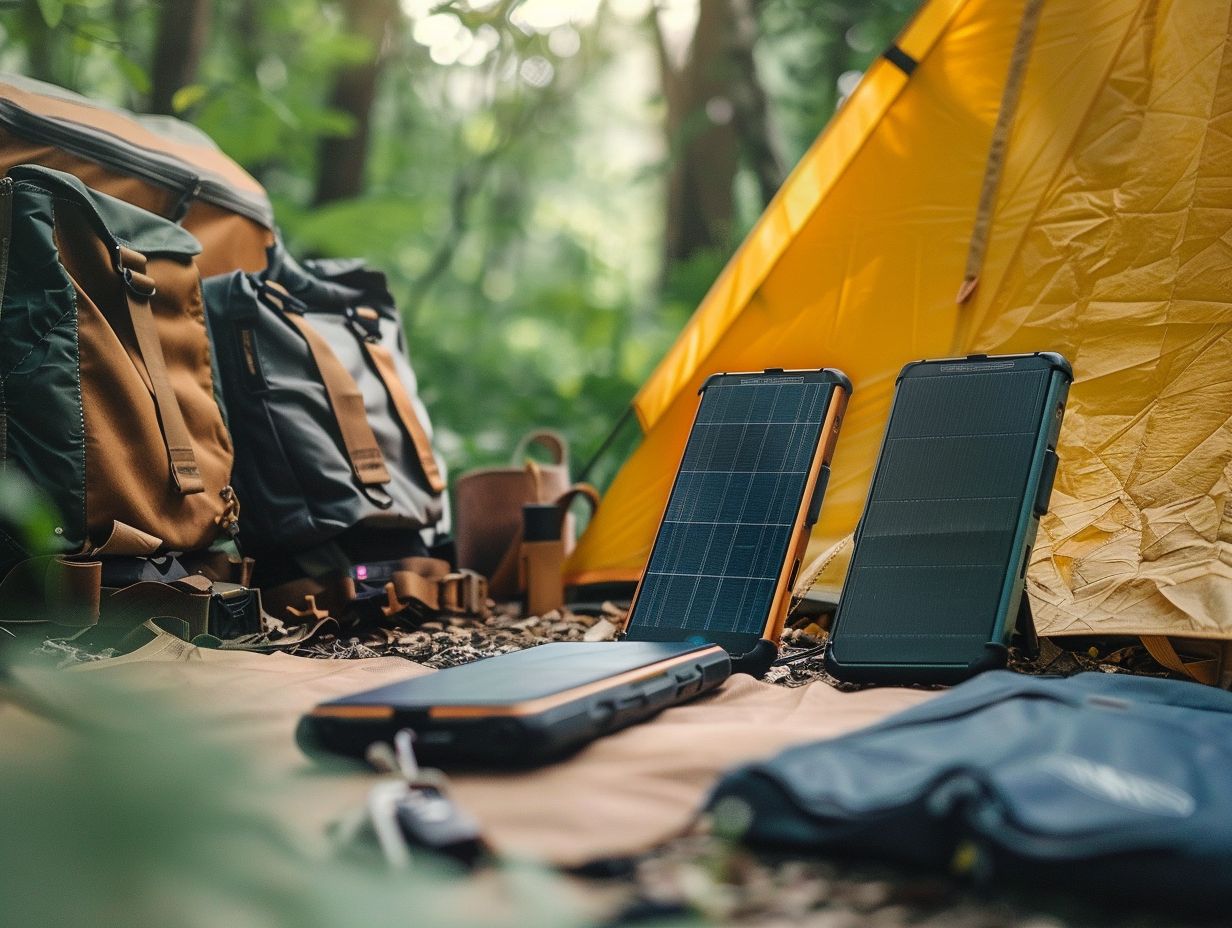
The BigBlue 28W Solar Charger is distinguished by its remarkable power output and waterproof construction, rendering it an exceptional choice for campers who may be exposed to fluctuating weather conditions.
The substantial power output of 28 watts enables efficient charging of a wide range of devices, including smartphones, tablets, and even compact laptops. The waterproof design ensures durability and reliability, especially in rainy or humid conditions.
Characterised by its compact size and lightweight build, this solar charger is ideal for outdoor activities such as hiking, backpacking, or camping. Its versatility and ability to harness solar energy position it as an essential accessory for individuals seeking a convenient and environmentally sustainable way to keep their devices charged while on the move.
5. Goal Zero Nomad 7 Plus Solar Panel
The Goal Zero Nomad 7 Plus Solar Panel is a compact and lightweight solar charger designed for campers seeking to maintain power for their devices while minimising added weight to their equipment.
Featuring a streamlined design that conveniently collapses to a fraction of its full size, the Nomad 7 Plus offers exceptional portability, facilitating ease of packing and transport. The panel’s portability enables users to effortlessly affix it to their rucksack or tent during hiking or camping excursions.
Equipped with efficient solar technology, this panel can rapidly charge smartphones, cameras, and other electronic devices, ensuring seamless connectivity to the digital realm even amidst outdoor settings. Its swift charging capabilities are particularly valuable in situations where one relies on devices for navigation or communication during outdoor adventures.
How to Use a Solar Charger for Camping?
Using a solar charger for camping requires careful setup and maintenance to ensure a steady and reliable power source for your devices from solar energy, a transformative resource in outdoor settings.
1. Positioning the Solar Panel
To optimise the effectiveness of a solar charger, it is imperative to correctly position the solar panel to receive direct sunlight continuously throughout the day. This strategic placement enables the solar panel to capture the maximum amount of sunlight, directly influencing the energy output and overall performance of the system.
By orienting the panel towards the sun’s trajectory and avoiding any obstructions such as shading from trees or buildings, one can enhance energy absorption. Furthermore, regular cleaning of the panel surface to remove dust or debris further improves its capacity to convert sunlight into electricity.
Appropriate positioning not only enhances energy efficiency but also prolongs the operational lifespan of the solar charger, providing enduring advantages for sustainable energy utilisation.
2. Connecting Devices
The connection of devices to the solar charger typically involves the utilisation of USB cables, which must be securely fastened to both the charger’s ports and the devices being charged.
Ensuring a reliable connection necessitates a thorough insertion of the USB cables into both the ports of the charger and the charging ports of the devices. Proper alignment of the cables is pivotal to prevent any disruptions in power flow during the charging process.
It is imperative to refrain from utilising damaged or frayed cables as they can present safety risks and impede the efficiency of charging. Regularly inspecting the connections while the devices are undergoing charging can facilitate the prompt identification of any loose connections, enabling timely correction for uninterrupted charging operations.
3. Monitoring and Maintaining the Charger
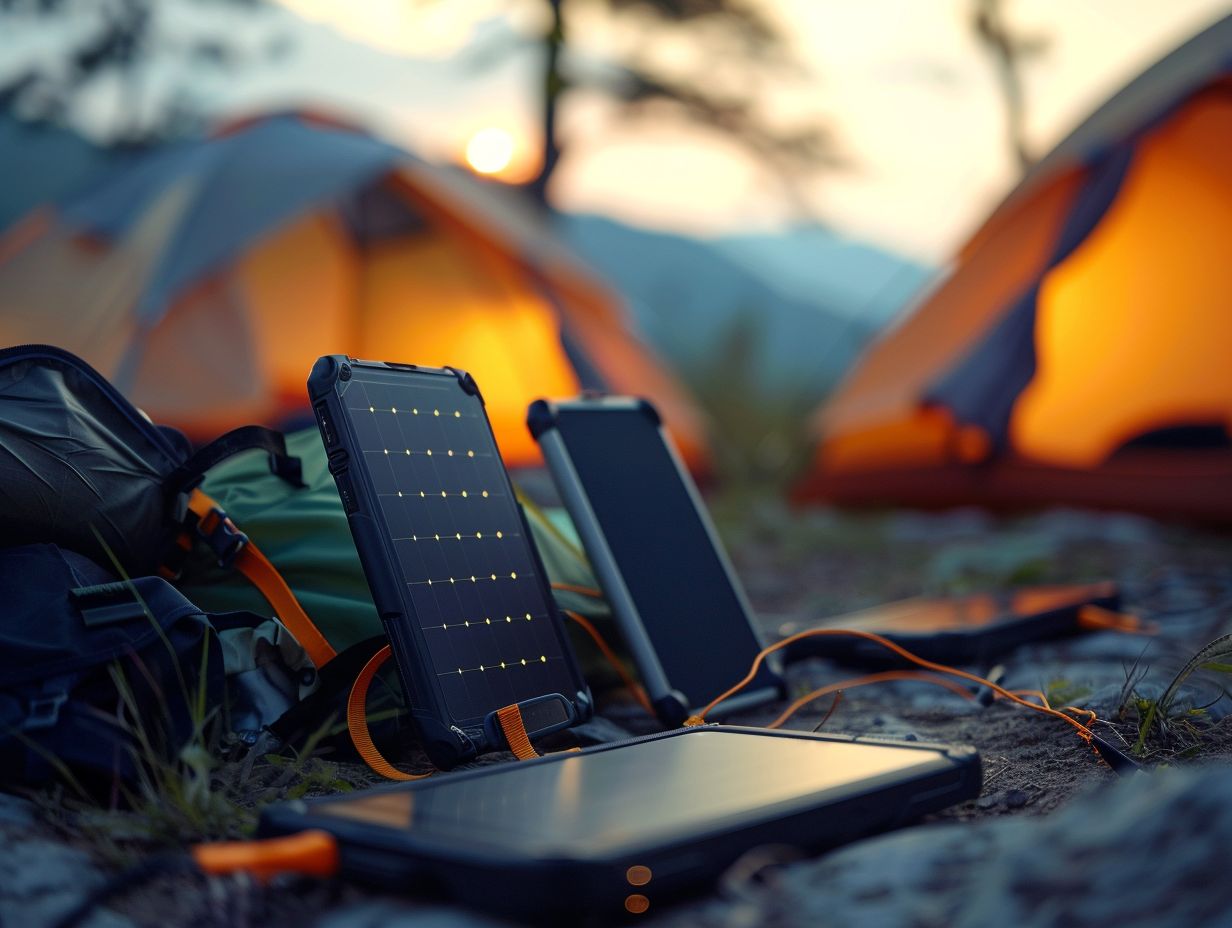
It is important to consistently monitor and maintain your solar charger to optimise its performance and durability, particularly in challenging outdoor settings such as camping. Ensuring the cleanliness of the solar panels is critical, as the presence of dirt and debris can impede sunlight absorption.
Regular inspection of the connections for any indications of corrosion or damage is necessary to secure an efficient power flow. Additionally, routine evaluation of the battery health and charge levels is essential for extending its lifespan and sustaining peak performance.
It is advisable to protect the solar charger from extreme weather conditions and periodically adjust its position to maximise sunlight exposure as part of its maintenance routine.
Additional Tips for Using Solar Chargers for Camping
To optimise the efficiency of your solar charger during camping trips, it is advisable to integrate additional strategies. These may involve using a power bank to store surplus energy, charging electronic devices during daylight hours to maximise solar exposure, protecting the charger from extreme temperature changes to maintain functionality, and ensuring the cleanliness of the solar panel to sustain optimal energy absorption.
1. Use a Power Bank
Utilising a power bank as an auxiliary battery can guarantee the availability of backup power for your electronic devices, particularly in situations characterised by diminished sunlight exposure or intensified device usage.
Supplementing a power bank with a solar charger enhances its utility by providing uninterrupted charging functionality irrespective of the ambient solar radiation levels. This amalgamation enhances the dependability of your mobile power system, rendering it well-suited for outdoor pursuits, travel endeavours, or contingency scenarios.
The integration of a power bank with a solar charger furnishes the versatility to charge devices even in the absence of conventional power sources, thereby ensuring continuous connectivity and power supply regardless of the prevailing circumstances.
2. Charge During Daytime
For optimal energy capture and device charging, it is advisable to charge electronic devices during daylight hours when solar panels can receive the maximum sunlight exposure.
Solar energy systems, such as solar panels, are engineered to exploit the solar energy. Charging devices during the daytime not only ensures efficient power supply but also capitalises on the full potential of energy capture.
By utilising the peak sunlight hours, one can significantly augment the energy capacity stored in the devices, thereby reducing reliance on grid-based electricity and diminishing the carbon footprint. Daytime charging can result in faster charging rates and extended battery life for devices, ultimately improving their overall performance and durability.
3. Protect from Extreme Temperatures
Ensuring proper maintenance of your solar charger in extreme temperatures is essential for preserving its performance and extending its longevity, particularly when utilised on camping excursions.
Elevated temperatures can accelerate the degradation of the battery within your solar charger, resulting in diminished efficiency. To mitigate this issue, it is recommended to position the charger in a shaded area or utilise a reflective cover to reduce direct exposure to intense sunlight.
Conversely, sub-zero temperatures can impede the functionality of the charger. Thermal insulation through the use of a blanket or proximity to one’s body can aid in retaining heat and sustaining operational efficiency.
Furthermore, it is imperative to verify that the solar charger possesses water-resistant properties to shield it from precipitation such as rain or snow, especially under unpredictable weather conditions.
4. Keep the Solar Panel Clean
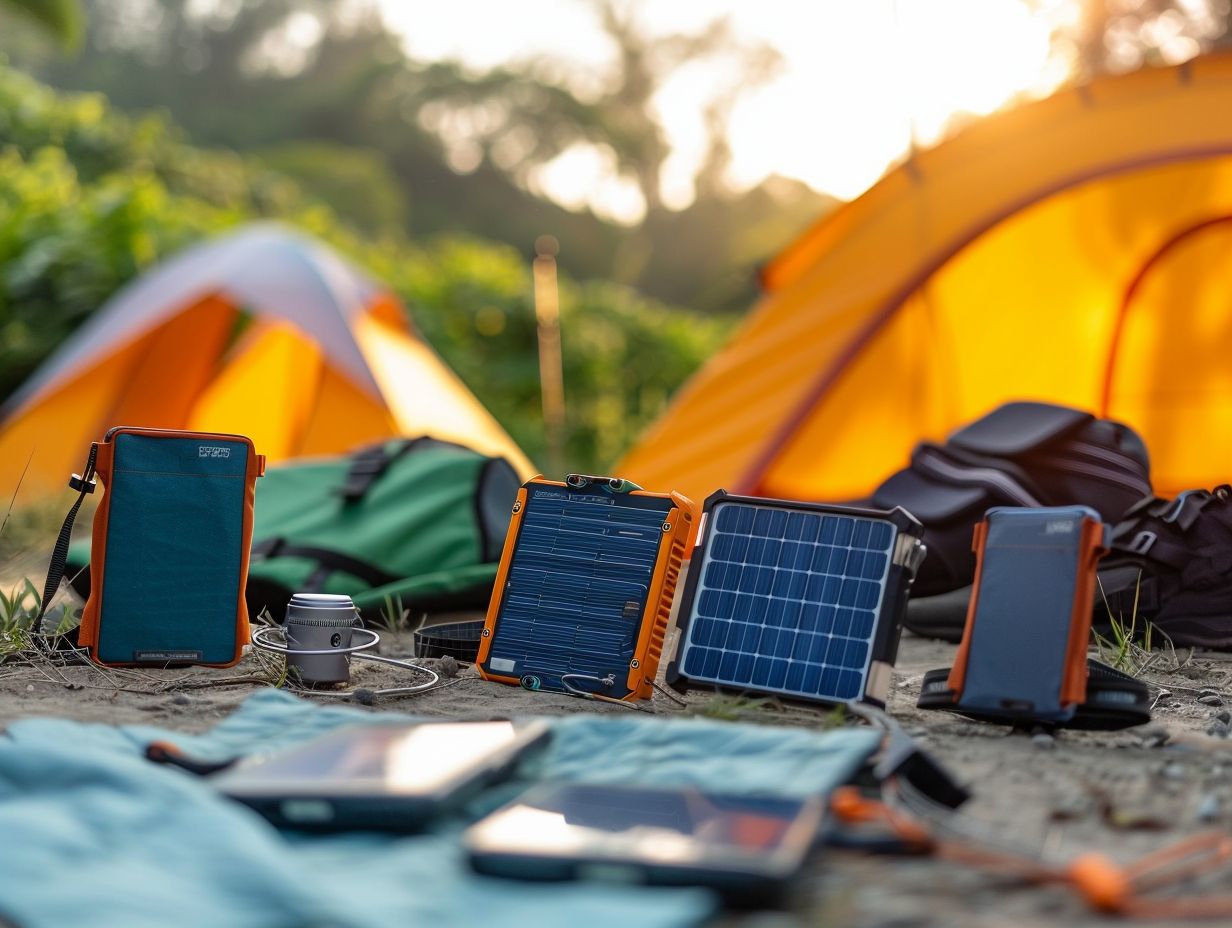
Ensuring the cleanliness of solar panels is imperative for maintaining their efficiency, as the presence of dirt and debris can obstruct sunlight and diminish energy capture. This becomes particularly critical when utilising solar panels in outdoor environments such as camping, where exposure to elements like dust, pollen, and bird droppings can swiftly accumulate and impede performance.
To guarantee optimal efficiency, it is advisable to conduct regular inspections of the panel to identify any buildup and subsequently clean it using a mixture of mild soap and water. It is important to avoid the use of abrasive materials or harsh chemicals that could potentially harm the panel’s surface.
Furthermore, positioning the solar panel at an appropriate angle can help prevent the buildup of debris and enhance exposure to sunlight, ultimately optimising its energy production capabilities.
Frequently Asked Questions
1. What are the key features to look for in the best solar chargers for camping?
When shopping for a solar charger for camping, it’s important to look for features such as portability, durability, charging speed, and compatibility with different devices. You may also want to consider the size and weight of the charger, as well as any additional features like built-in batteries or multiple charging ports.
2. How do solar chargers work for camping?
Solar chargers use photovoltaic (PV) cells to convert sunlight into electricity, which is then stored in a battery or used to directly charge a device. These chargers are typically portable and can be placed in direct sunlight to collect solar energy. Some models also have built-in batteries that can store energy for later use.
3. Are solar chargers effective in all weather conditions?
While solar chargers do require sunlight to work, they can still be effective in cloudy or overcast weather. However, they may not be as efficient as they are on sunny days. It’s also important to note that extreme weather conditions, such as heavy rain or snow, may affect the performance of a solar charger.
4. Can solar chargers be used to charge multiple devices at once?
Many solar chargers come with multiple USB ports, allowing you to charge multiple devices at once. However, it’s important to check the wattage and charging speed of the charger to ensure it can effectively charge all of your devices simultaneously.
5. How long does it take for a solar charger to fully charge a device?
The charging time for a solar charger will vary depending on factors such as the wattage of the charger, the amount of sunlight, and the type of device being charged. On average, it can take anywhere from 2-8 hours for a solar charger to fully charge a smartphone.
6. Are there any safety precautions to take when using a solar charger for camping?
It’s important to read the instructions and follow safety precautions when using any electronic device, including solar chargers. Some general safety tips include avoiding exposure to water, keeping the charger away from heat sources, and not overcharging the device. It’s also recommended to unplug the charger when not in use.

